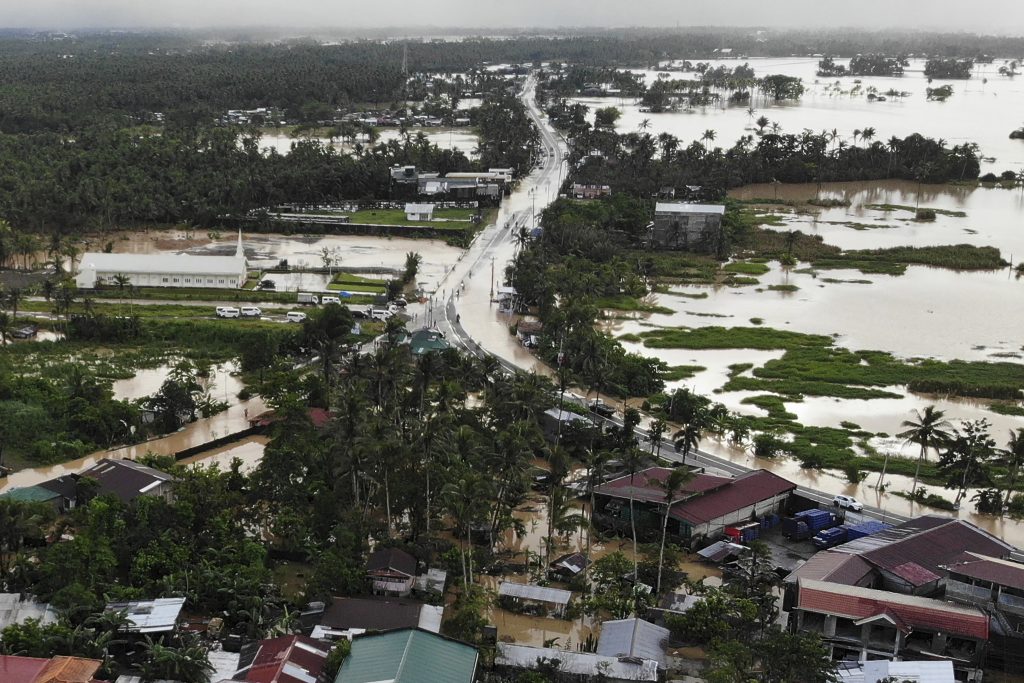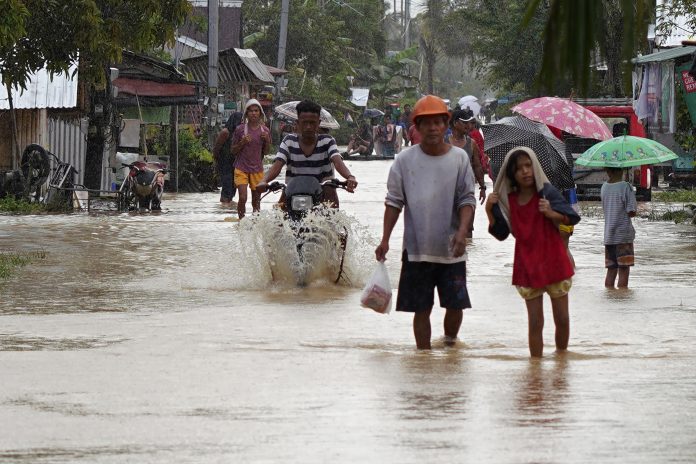Rescuers hampered by mud and rain searched Tuesday for survivors of landslides that smashed into villages in the central Philippines, as the death toll from tropical storm Megi rose to 28.
More than 17,000 people fled their homes as the storm pummelled the disaster-prone region in recent days, flooding houses, severing roads and knocking out power.
At least 22 people were dead and 27 missing after landslides slammed into multiple villages in Leyte province — one of the hardest hit by the storm — local authorities said. Just over 100 people were injured.
Three people were also killed in the central province of Negros Oriental and three on the main southern island of Mindanao, according to the national disaster agency.
“It’s supposed to be the dry season but maybe climate change has upended that,” said Marissa Miguel Cano, public information officer for Leyte’s Baybay City, where many of the devastated villages are located.
Drone footage shared on Facebook and verified by AFP showed a wide stretch of mud that had swept down a hill of coconut trees and engulfed Bunga, one of the communities affected.
At least one person had been killed and 21 people were missing in the devastated village, which had been reduced to a few rooftops poking through the mud.
Cano said the hilly region of corn, rice and coconut farms was prone to landslides, but they were usually small and not fatal.
Rescue efforts were also focused on the nearby village of Kantagnos, which an official said had been hit by two landslides.
Some residents managed to escape or were pulled out of the mud alive, but many are still feared trapped.
Five people have been confirmed dead in Kantagnos, but it is not clear how many are still missing.

A Philippine Coast Guard video shared on Facebook showed six rescuers carrying a mud-caked woman on a stretcher to safety.
“There was a small landslide and some people were able to run to safety, and then a big one followed which covered the entire village,” Baybay City Mayor Jose Carlos Cari told local broadcaster DZMM Teleradyo.
“We’re looking for many people, there are 210 households there.”
Cari said the bad weather was hampering rescue efforts.
“We’re pushing, but we’re having a hard time because it’s dangerous,” he said.
“Equipment has been mobilised, everything is ready, but we’re unable to move because it’s still raining heavily and rivers are still swollen.”
Direct hit on homes
The military has joined coast guard, police and fire protection personnel in the search and rescue efforts.
National disaster agency spokesman Mark Timbal said landslides around Baybay City had reached settlements “outside the danger zone,” catching many people by surprise.
“There were people in their homes that were hit directly by the landslide,” Timbal told AFP.
Tropical storm Megi — known in the Philippines by its local name Agaton — is the first major storm to hit the country this year.
Whipping up seas, it forced dozens of ports to suspend operations and stranded nearly 8,000 people at the start of Holy Week, one of the busiest travel periods of the year.
The Philippines reopened to fully vaccinated tourists from most countries in February after lifting practically all Covid-19 restrictions, and Easter is a popular holiday for domestic tourists.
The storm comes four months after a super typhoon devastated swathes of the archipelago nation, killing more than 400 people and leaving hundreds of thousands homeless.
Scientists have long warned typhoons are strengthening more rapidly as the world becomes warmer due to climate change.
The Philippines — ranked among the most vulnerable nations to its impacts — is hit by an average of 20 storms every year.









